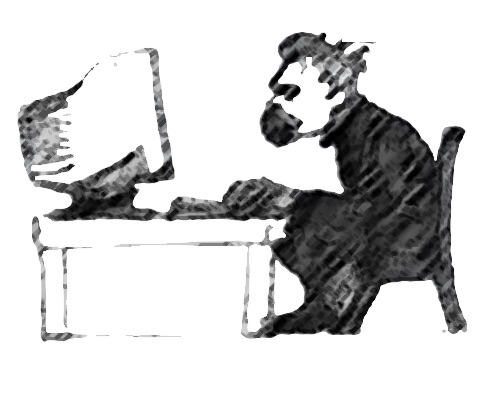notational jotting
Aphorisms are a part of everyday life. If we need evidence to justify this claim, we need only look to Walter Benjamin’s Arcades Project, which Geoffrey Sirc refers to as “notational jottings” that are “a desperately important compositional skill” and which can be found in “interesting little bits of the everyday” (“Box Logic”). Moreover, such a method of composing is open to experimental ways of thinking that typifies the digital humanities and their interdisciplinary approaches the pedagogical event. To turn toward experimental approaches to the pedagogical event—based on un/art practices rather than process-oriented ones—enables a condition of tremulous excitement (a twitter) exposed in the surprise of an observation that sparks the deep thought of an aphorism’s pithiness—a terse form of writing achieved in a only a few words (or characters/images). The aphorism is an (experimental) art of exegesis that links thought to composition im-mediately and that refuses to be elaborated, but that invites traitorous thoughts to take up residence in the yet unbuilt rooms of the digital.
Gilles Deleuze explains as much when he speaks of Nietzsche writing: “an aphorism is present as a fragment; it is the form of pluralist thought; in its content it claims to articulate and formulate a sense. The sense of a being, an action, a thing—these are the object of the aphorism. […] only the aphorism is capable of articulating sense, the aphorism is interpretation and the art of interpreting” (Nietzsche). Yet, this interpretation remains open to other interpretations; it is not the interpretation of rhetorical argument, but of ruminating within the space of pluralist thought presented in the digital, like the play of the un/artist, since it stands apart from any grand narrative; the aphorism presents us with the little narratives that Lyotard sees as the ambition of avant-garde art, and which Kaprow and Ludwinski extend in the move to un/art. As the thought of composition, aphorisms make sense and change senses in relation to the thought(s) they compose apart from the narratives in which they were built. For Nietzsche, the aphorism becomes a composition of the post-modern, interested in ruminating thought rather than the fully-formed and explicated forms of knowledge that restrict imagination. Composing aphoristically would then allow the thought of composition to become a way of form itself, to compose an ‘art’ of pluralistic interpretations (potentialities).
The potentialities of writing aphoristically return us (eternally?) to the possibility of writing strangely. Agamben explains the writing of this potentiality as a place where
[t]he trace is nothing other than the most rigorous attempt to reconsider—against the primacy of actuality and form—the Aristotelian paradox of potentiality, the gesture of the scribe who dips his pen in thought and writes solely with his potentiality (not to write). The trace, writing ‘without presence or absence, without history, without cause, without arkhē, without telos,’ is not a form, nor is it the passage from potentiality to actuality; rather, it is a potentiality that is capable and that experiences itself, a writing tablet that suffers not the impression of a form but the imprint of its own passivity, its own formlessness. (Potentialities)
Thinking in terms ‘characters’ rather than merely image and/or text offers a capability of experiencing the formlessness of such a writing, and it is one that is opened in the relation to the (traitorous) hospitality of the digital. In terms of digital composition, a character is a mark that marks the capability of composing aphoristically by imprinting a form that remains formless in its potentiality not to write (purely). In Derridean terms, a character corresponds to the written grapheme, not as its equivalent, but as an analogue whose reference opens a (third) relation that has no central argument—it has no center at all. The political significance of writing this third relation is how it is capable of addressing the points-of-contention in the ‘bureaucratization the imagination’ by refusing to become bureaucratized (centered).
Extending Nietzsche’s ambition of writing aphoristically presents such a refusal; where the witness’s testimony (c)enters what can be said, the traitor’s aphoristic composition presents us with intuitions, movements of ‘writing’ where thought escapes bureaucratization (law). At certain moments, we must refuse to (c)enter testimonies and enter into “an infinite task that risks condemning the writer to a didactic, pedagogic role, and, in so doing, of excluding the demand [the (committed) writer)] carries within him and that constrains him to lack a place, a name, a role, and an identity, that is, never yet to be a writer” (Political). The formlessness of aphorisms presents us with such a risk, a risk supplemented by the hospitality of the digital, an invitation to compose ourselves into a space that lacks place—the ones we carry within ourselves and that open us into the potentialities of pluralist thought. Accepting the digital’s hospitality in our pedagogy would have us affirm the part(s) it takes in forming thought from the formlessness of the refusal to write purely.

memetic aphorisms
notational jottings ·
Are YOU wasting precious time thinking up funny captions? Save yourself the grief.
Talan Memmott
Davin Heckman
Claire Donato
Sergio Figueiredo
Jeremy Hight
Jeff T. Johnson
Kelly Lydick
Mark Marino
Craig Saper
Orchid Tierney
Erik Zepka